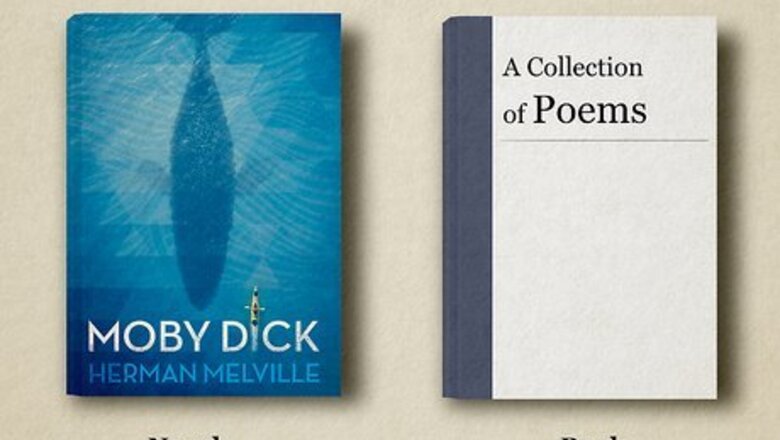
views
- A novel is a type of book written in sentences, or prose, while books are a general term for bound pieces of paper containing text or illustrations.
- Books are either fiction, describing made-up stories, or non-fiction, containing facts. Novels are always fictional narratives following a plot, characters, and theme.
- Novels are typically no less than 40,000 words long, while books have no set length.
Key Differences Between Novels and Books
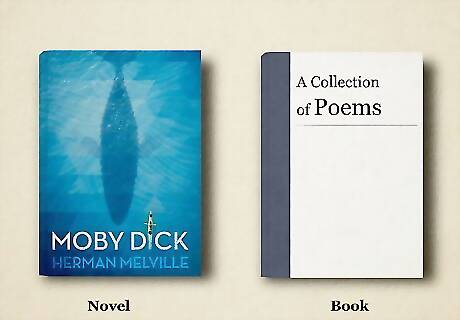
A novel is a type of book, while a book is a bound collection of pages. Okay–you’re probably familiar with books. But just to remind you, books are objects consisting of text or illustrations on pieces of paper that are bound together. Novels are a type of book that’s written in prose. This means that novels contain sentences and paragraphs, as opposed to lines and stanzas of poetry. So, a novel is a book, but a book isn’t always a novel! Electronic books, or e-books, that you read online are considered books even though they’re not physical objects.
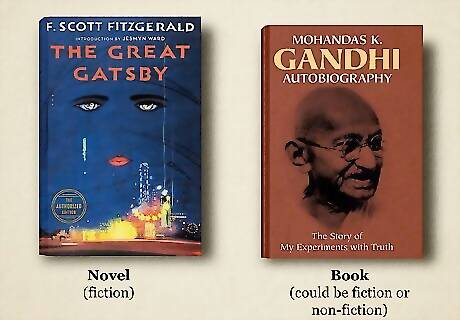
Novels are purely fiction, while a book can be fiction or non-fiction. A novel covers a structured narrative, or story, that is fictional. This means that the novel contains a plot, setting, and characters that are imaginary or made up. Some books are fiction, while others are non-fiction. Non-fiction books cover real-life facts, history, and educational concepts. For example, comic books and children’s picture books are works of fiction, but they are not novels. Non-fiction books include textbooks, historical diaries, biographies, and cookbooks. Novels are some of the most popular types of books. The Great Gatsby, Pride and Prejudice, and The Hunger Games are all some you’ve likely heard of (and read)!

Books have no set length, while novels contain more than 40,000 words. There’s no real amount of words or pages that a book has to have to be considered a book. Children’s picture books are often only 20 pages long and contain several words per page, while encyclopedias tend to have hundreds to thousands of pages. To be considered a novel, it typically has to contain at least 40,000 words. Most novels average around 60,000 to 100,000 words, which is about 300 pages of text.
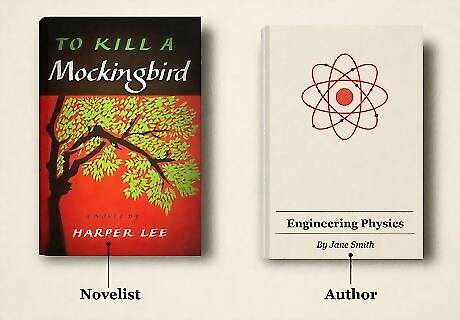
The writer of a book is called an author, while a novelist writes novels. An author refers to anyone who writes a book, whether they wrote a children’s book, textbook, or memoir. When someone writes a novel, you call them a novelist. While they’re technically an author because they wrote a type of book, it’s most accurate to call them a novelist.
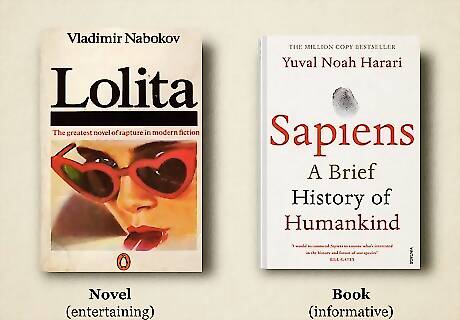
A novel entertains you, while a book records and communicates info. When a novelist writes a novel, they want to transport you to a different place and make you feel for their characters as you follow their story. Historically, people wrote books to record information and pass it on to others. While you might find fiction and non-fiction books entertaining, a book’s general purpose is to convey information and educate you about a subject. A novel is supposed to get an emotional response out of you. The novelist wants you to get so absorbed in the story that you can’t put the novel down until you finish it. Because books are more educational, you tend to read them in little bursts over a longer period of time. Novels often contain important and influential societal commentary and themes. While that often makes them educational, their main purpose is still to entertain you.
What is a novel?

A novel is a long work of fiction written in narrative form. All novels are written works of fiction that follow a story with a plot, or series of events. So, the story, setting, and main characters in a novel are all made up by the novelist. There is typically an underlying idea, or theme, that the novelist weaves into their story, such as practicing self-love or fighting against injustice. There’s a novel out there for everyone, as they come in different genres like romance, science fiction, fantasy, mystery, and thrillers. Novels are typically written with a relatable main character that goes through a journey or transformation. You tend to connect with the character, putting yourself in their place in the story, and root for their success. Novellas are a shorter type of novel. These are also fictional narrative books, but they typically contain around 10,000 to 40,000 words, while novels contain upwards of 40,000 words.
What is a book?
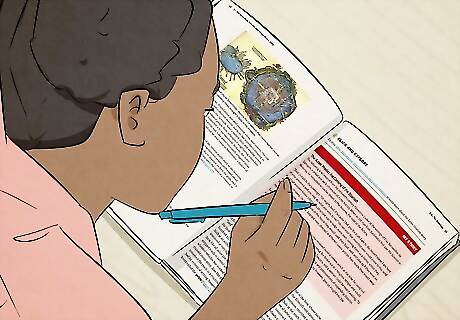
A book is an object made of text or images bound together at 1 end. This is a pretty general definition because books cover all sorts of works of literature, like poetry compilations, nature guides, autobiographies, and chapter books. Books have always been a way for people to document and transmit their knowledge to others, whether it's with made-up stories or factual accounts of history. In fact, books originate back in 3000 BCE Egypt! Back then, they were nothing more than scrolls of papyrus paper. Today, books can be physical or digital. It’s easy to pick a book up from the library, find it online as a pdf, or download it to your e-reader.

Most books have specific information in the front, back, and middle. In the beginning pages of a book, you’ll usually see the title, author, publisher, International Standard Book Number (ISBN), and copyright information. Sometimes that’s followed by a table of contents, a foreword, and a preface. In the middle is the actual content of the book. Then, at the end, the author might give acknowledgments, provide a glossary defining the terms used in the book, and list their references in a bibliography. A foreword introduces the author and is written by someone else, while the preface is written by the author to explain why they wrote the book.



















Comments
0 comment